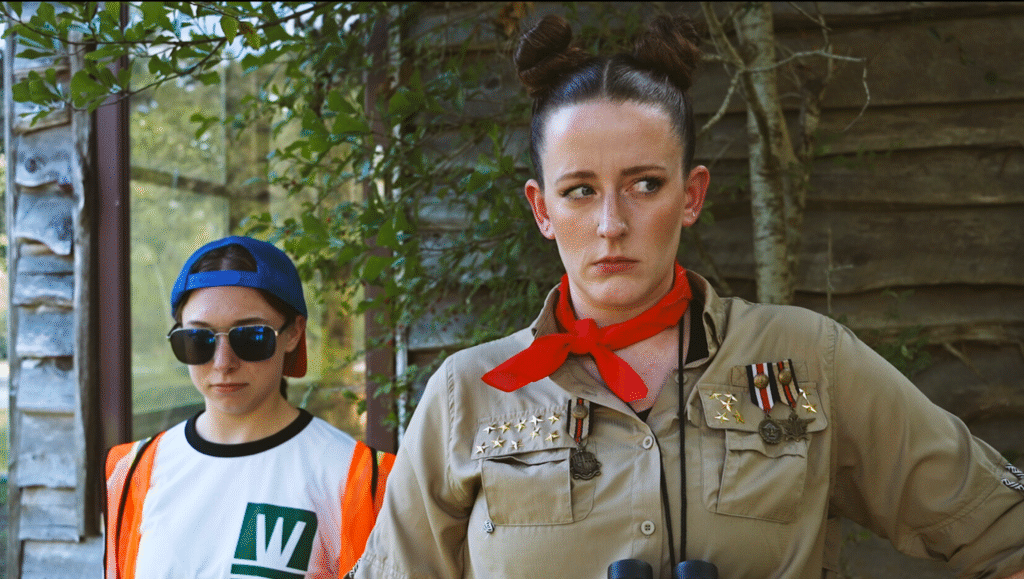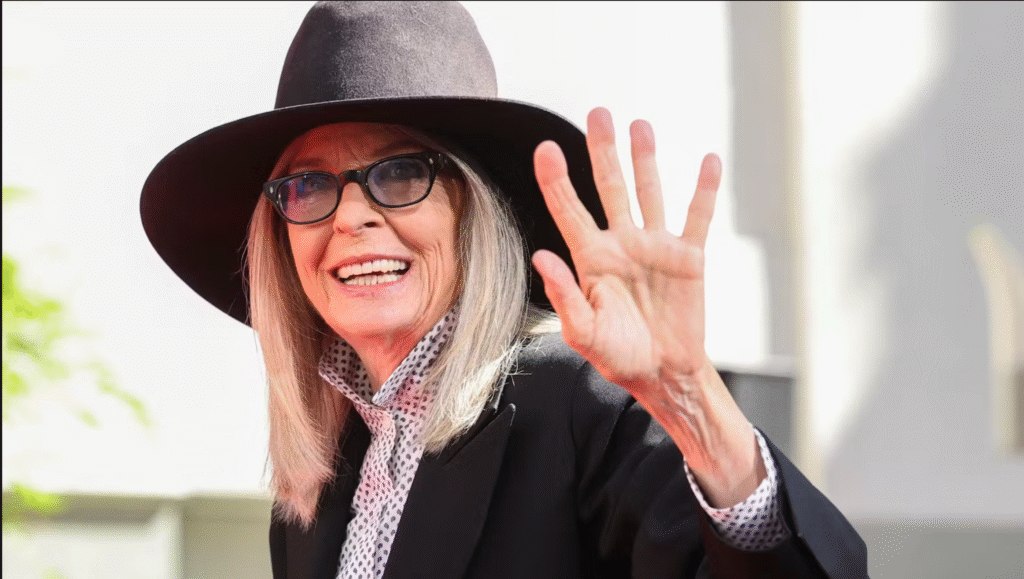Entertainment
The Challenge’s Nelson Thomas Charged With DWI for Near-Fatal Crash on November 1, 2023 at 12:09 am Us Weekly

Nelson Thomas. James Dimmock/Paramount +
Nelson Thomas has been charged with driving while intoxicated six months after his nearly fatal car crash.
Us Weekly confirmed that the Challenge alum, 34, was officially charged by the Austin Police Department with a misdemeanor DWI on September 28.
Thomas’ accident occurred back in March. The reality star was pulled out of a flaming vehicle by Minnesota Vikings player K.J. Osborn and three other strangers. Thomas sustained an ankle injury in the accident and had to get several surgeries.
However, his ankle did not properly heal seven months after the procedure. As a result, Thomas was facing possible amputation.
“The bone has been rebroken, it is out of place. It’s not healing it all,” Thomas tearfully said in September in an emotional Instagram video. “I’ve been having pain these last two weeks, but I thought it was from me maybe overworking it in PT and in the gym. Come to find out, where they have the screws and plates, the bone broke. It did not reheal.”
Thomas’ doctor told him at the time he was in the “salvage stage” and had two options on how to proceed either amputation or an ankle fusion surgery, which fuses the ankle bone into one piece and is usually done to treat arthritis per the Cleveland Clinic. After revealing the news, Thomas shared he was going to get a second opinion.
The following month, Thomas gave an update that after seeing three specialists, he was going to give stem cells a try since he was “scared” to get another procedure done. The reality star revealed his plans to go to Cabo San Lucas, Mexico, to receive treatment before opting for another surgery.
“I have finally made my decision on the route I’m going to take. I want to thank the man upstairs and everyone who has supported me on this journey,” Nelson captioned an October Instagram Reel. “I am deeply grateful to my @dr.akhan, and I can’t wait to move forward with the procedure. Off to Mexico tomorrow! What’s that saying? Viva, viva la Mexico aka Cabo .”
Thomas got his reality TV start on season 3 of MTV’s Are You the One? He later joined the Challenge franchise in 2016 and has competed in nine seasons of the competition series. Thomas made his way to the finale in two seasons but never came out victorious. He currently holds the record for the most consecutive daily challenge losses by a male contestant, which is 54.
Nelson Thomas has been charged with driving while intoxicated six months after his nearly fatal car crash. Us Weekly confirmed that the Challenge alum, 34, was officially charged by the Austin Police Department with a misdemeanor DWI on September 28. Thomas’ accident occurred back in March. The reality star was pulled out of a flaming
Us Weekly Read More
Entertainment
Chaos and Comedy: Darby Kingman’s “Camp Wackapoo: Rise of Glog”

Darby Kingman’s “Camp Wackapoo: Rise of Glog” redefines summer camp comedy with a wild, energetic story about ambition, chaos, and the joy of embracing the unexpected. The film centers on a relentlessly competitive camp counselor who’s determined to finish first—only to face a motley crew of unruly campers and a summer unlike any other.
As Darby puts it, “Not everything is that deep. It really honestly was to make people laugh. She has all these kids that are not working with her and she’s just losing her mind. It’s crazy, silly, goofy, and it was a blast.”
What started as a simple scene for Darby’s acting reel evolved into a full-fledged film with encouragement from her mentor at Debbie Reynolds Acting School. Darby dove into every role—writing, directing, starring, and meticulously preparing each prop and costume. “Plan and prepare, but also be flexible and ready to be in the moment—that’s when the magic happens,” she advises.
Working with a handpicked cast of her own dance students, Darby built an atmosphere of real teamwork and camaraderie. She credits the “precious” energy of her young cast, her creative director of photography, and the overall spirit of her production team for turning the project into something bigger than herself. Her experience is an inspiring blueprint for indie filmmakers:
“Take initiative and control of your career. You can’t just sit around and wait for somebody to pick you. Figure out what you’re good at and go for it. Create something that brings joy to others.”

Her production motto? “Preparation is key, but you have to be ready to go with the flow—that’s when the magic happens.” Darby’s fearless creativity, focus on collaboration, and love for comedy shine throughout “Camp Wackapoo: Rise of Glog.” It’s more than just a camp satire—it’s a heartfelt testament to hard work, original humor, and leadership from the ground up: “People need to laugh right now. That’s a win.”
Catch “Camp Wackapoo: Rise of Glog” and experience Darby’s infectious energy and comic genius at the Deluxe Theatre on November 1, 2025. Get your tickets now at Houstoncomedyfilmfestival.com.
Entertainment
Diane Keaton Dies at 79

The world of film and entertainment is mourning the loss of Diane Keaton, an Oscar-winning actress renowned for her enduring talent, individuality, and influence on generations of performers and fans. Keaton died at the age of 79 in California on Saturday, October 11, 2025, her family confirmed. Details remain private, with her family requesting privacy as they grieve this profound loss.

A Distinctive Talent
Diane Keaton rose to fame in the 1970s through a series of memorable roles, most notably as Kay Adams in “The Godfather” trilogy and as the quirky, unforgettable lead in Woody Allen’s “Annie Hall,” for which she won the Academy Award for Best Actress. Her performances in films like “The First Wives Club,” “Something’s Gotta Give,” and the “Book Club” series solidified her reputation as an actress with unique comedic timing and dramatic depth. Keaton was celebrated not only for her artistry but also for her androgynous fashion sense, characterized by menswear-inspired looks, hats, and an easy, effortless style that influenced generations.
Legacy and Tributes
Following the news of her passing, tributes poured in from Hollywood and beyond. Bette Midler, Goldie Hawn, and Jane Fonda were among the countless stars who expressed devastation and admiration for Keaton’s incomparable legacy. Hawn recalled their friendship and collaborations, writing: “Diane, we aren’t ready to lose you…you stole the hearts of the world and shared your genius with millions”. Midler echoed the sentiment, praising Keaton as “brilliant, beautiful, extraordinary” and a truly original presence in Hollywood.

Private Struggles and Final Months
Though fiercely independent and known for her openness, Keaton kept her declining health private in her final months. Friends and neighbors noticed her retreat from public life and social media, and she was recently seen less often in her Brentwood neighborhood. In the past, Keaton candidly discussed her ongoing battles with skin cancer and bulimia, openly advocating for personal health and authenticity.
Remembering Diane Keaton
Diane Keaton leaves behind a legacy defined by her fearless performances, unique style, and enduring influence on the arts. She is survived by her two children, Dexter and Duke. As Hollywood and her global fanbase mourn, her pioneering spirit and unmistakable voice will continue to inspire generations.
Entertainment
The Hooper Premiere Delivers 90s Nostalgia

The debut screening of The Hooper transported audiences straight back to the golden era of the 90s, as fans, producers, and supporters gathered to celebrate filmmaker Dakarai Akil’s first feature film.

A Full 90s Vibe
From colorful windbreakers and bucket hats to the booming beats of old-school R&B and hip-hop, the premiere had all the hallmarks of a true 90s throwback. Guests embraced the theme wholeheartedly, creating a night that felt like stepping into a time machine. The venue’s decor reflected vintage basketball culture, perfectly aligning with the film’s energy.

“It wasn’t just a premiere—it was a memory lane experience,” said one attendee. “It reminded us of the music, fashion, and spirit we grew up with.”

Dakarai Akil’s Debut
The Hooper marks Akil’s official debut as a writer and director, telling a heartfelt story of grit, passion, and ambition. The film drew a warm response from the crowd, earning a standing ovation and heartfelt cheers.

Akil thanked the audience, noting how meaningful their support was: “Tonight wasn’t just about showcasing my film—it was about honoring the culture that shaped it.”

Community Energy
The turnout included local creatives, industry pros, and longtime supporters of Akil’s work. Between snapping photos on the 90s-themed backdrop and singing along to classic hits, attendees embraced the event as a celebration of both art and community.

Looking Forward
With The Hooper now making waves, Akil is poised to reach even wider audiences in the months ahead. If the premiere’s atmosphere was any indication, this is just the beginning of a filmmaker ready to blend nostalgic charm with fresh storytelling.

 Business3 weeks ago
Business3 weeks agoDisney Loses $3.87 Billion as Subscription Cancellations Surge After Kimmel Suspension

 Entertainment3 weeks ago
Entertainment3 weeks agoWhat the Deletion Frenzy Reveals in the David and Celeste Tragedy

 Filmmaking4 weeks ago
Filmmaking4 weeks agoThe Real Reasons Film Jobs Are Disappearing

 Film Industry4 weeks ago
Film Industry4 weeks agoInside “Sanctuary”: Ian Courter on Military Comedy’s Human Side

 Entertainment4 weeks ago
Entertainment4 weeks agoABC Suspends ‘Jimmy Kimmel Live!’ Indefinitely After Kirk Remarks

 Tech4 weeks ago
Tech4 weeks agoWhy Experts Say AI Could Manipulate, Blackmail, and Even Replace Human Relationships

 News4 weeks ago
News4 weeks agoSeeing Trauma: What Charlie Kirk’s Death Reveals About a Nation in Conflict

 Entertainment3 weeks ago
Entertainment3 weeks agoExecutive Producer Debut: How Celia Carver Created Festival Hit ‘Afterparty’



























